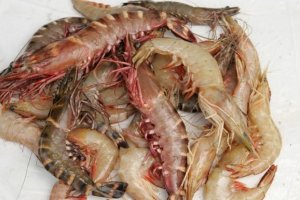This piece was first published in the March 2023 edition of International Aquafeed magazine
Author: Dr Brett Glencross
One of the roles at IFFO that we undertake annually, in combination with our analysis of global marine ingredient production, is a review of use of those resources. In undertaking that review we rely on a system of obtaining data from our members (both fishmeal producers and fishmeal users), as well as our industrial and academic networks to get insights from across the world. It is a system that we have used for years and which we then cross-reference to get a reality check on our numbers. It has grown to become a robust resource used by many organisations around the world as a reference on the use of marine ingredient resources globally. In earlier columns I have used some of that data to discuss the changing use among different high-level sectors like aquaculture, pigs, poultry and petfood, among others. However, we analyse things in a bit more detail than just the high-level sectors and delve into individual country and species sectors.
 In recent years a review of the data on marine ingredient use statistics shows that there is a change emerging among what is being used and by who in the aquaculture sector. Salmonids previously held the mantle as the greatest user of marine ingredients by volume, and they remain as the largest user of fish oils globally. The salmonids sector has also historically been a big user of fishmeal, and still use about half a million tonnes globally. However, fishmeal use by crustacean aquaculture and, in particular that of shrimp aquaculture, has been a significantly higher user for more than a decade. But between these two sectors the balance on total marine ingredient use has always been in favour of the salmonids sector. In 2021 though, for the first-time shrimp became the outright supreme user of marine ingredients in total.
In recent years a review of the data on marine ingredient use statistics shows that there is a change emerging among what is being used and by who in the aquaculture sector. Salmonids previously held the mantle as the greatest user of marine ingredients by volume, and they remain as the largest user of fish oils globally. The salmonids sector has also historically been a big user of fishmeal, and still use about half a million tonnes globally. However, fishmeal use by crustacean aquaculture and, in particular that of shrimp aquaculture, has been a significantly higher user for more than a decade. But between these two sectors the balance on total marine ingredient use has always been in favour of the salmonids sector. In 2021 though, for the first-time shrimp became the outright supreme user of marine ingredients in total.
So, what has driven this change? A review of the data shows a range of factors at play in the past decade. Notable has been the growth in shrimp production globally, and in particular regions like that of Ecuador in South America. While feed conversion ratios in both sectors are only marginally different, with shrimp aquaculture on average globally at just under 1.5, while salmonids are just under 1.3, making salmonids a little bit more efficient. In terms of the relative inclusion levels of fishmeal and fish oil, there isn’t that much difference between the sectors there either. Marine ingredient use (fishmeal + fish oil) by the salmonids sector is now around the 20% mark, whereas shrimp aquaculture is marginally less, at around 17%. With salmonids, it’s a bit of a balance between fishmeal and fish oil use, whereas with shrimp it is nearly all driven by demand for fishmeal. However, one thing is certain. As of 2021 shrimp reign supreme as the world’s biggest user of fishmeal and now marine ingredients outright. However, it remains to be seen if they can maintain this mantle into the future.









